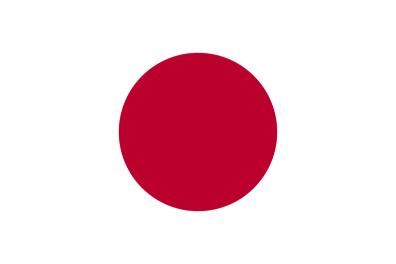Donate to Support Supercluster
Your support makes the Astronaut Database and Launch Tracker possible, and keeps all Supercluster content free.
SUPPORTSupercluster on Patreon
Your support makes the Astronaut Database and Launch Tracker possible, and keeps all Supercluster content free.
SUPPORTThis goes
to space
Quasi-Zenith Satellite System (QZSS)
The Quasi-Zenith Satellite System (QZSS), also known as Michibiki, is a four-satellite regional satellite navigation system and a satellite-based augmentation system developed by the Japanese government to enhance the United States-operated Global Positioning System (GPS) in the Asia-Oceania regions, with a focus on Japan. The goal of QZSS is to provide highly precise and stable positioning services in the Asia-Oceania region, compatible with GPS. Four-satellite QZSS services were available on a trial basis as of 12 January 2018, and officially started on 1 November 2018. A satellite navigation system independent of GPS is planned for 2023 with seven satellites. In May 2023 it was announced that the system would expand to eleven satellites.
QZSS uses one geostationary satellite and three satellites in Tundra-type highly inclined, slightly elliptical, geosynchronous orbits. Each orbit is 120° apart from the other two. Because of this inclination, they are not geostationary; they do not remain in the same place in the sky. Instead, their ground traces are asymmetrical figure-8 patterns (analemmas), designed to ensure that one is almost directly overhead (elevation 60° or more) over Japan at all times.
Courtesy of Wikipedia.
On this
rocket
H3-22
The H3 Launch Vehicle is an expendable launch system with two stages. It is a liquid-propellant rocket with strap-on solid rocket boosters and will be launched from Tanegashima Space Center in Japan.
Stats
Height: 63 m (207 ft).
Diameter: 5.27 m (17.3 ft).
Stages: 2
Boosters: 0, 2 or 4
Payload to sun-synchronous orbit (SSO): 4,000 kg (8,800 lb).
Payload to geostationary transfer orbit (GTO): 4,000–7,900 kg (8,800–17,400 lb).
The first stage uses liquid oxygen and liquid hydrogen as propellants and carries zero, two or four strap-on solid rocket boosters (SRBs) using polybutadiene fuel. The first stage is powered by two or three LE-9 engines which uses an expander bleed cycle design. The fuel and oxidizer mass of the first stage is 225 metric tons. The second stage is powered by a single engine which is an improved LE-5B. The propellant mass of the second stage is 23 metric tons.
Mitsubishi Heavy Industries (MHI) and JAXA are responsible for the design, manufacture, and operation of the H3. It is the world's first rocket to use an expander bleed cycle for the first stage engine.
The minimum configuration is to carry a payload of up to 4,000 kg (8,800 lb) into Sun-synchronous orbit (SSO) for about 5 billion yen (38.1 million USD), and the maximum configuration is to carry more than 6,500 kg (14,300 lb) into geostationary transfer orbit (GTO).
Credit: Wikipedia
From this
launch site
LA-Y2 - Tanegashima Space Center - Japan
LA-Y2
Launch Area - Yoshinobu Launch Complex 2 (LA-Y2 for short) is part of a two-launch-pad area of the Tanegashima Space Center used for the H-II family of rockets.
The pad is located just 190 meters (624 ft) from neighboring pad LA-Y1 and has been used -- to date -- exclusively for the H-IIB rocket for automated HTV resupply missions to the International Space Station.
The overall two-pad Yoshinobu Launch Complex is the northernmost launch site of the Tanegashima Space Center.
Rockets are assembled and processed vertically in the vehicle assembly building before technicians roll them out to the launch pad, a 30-minute journey of 365 meters.
LA-Y2 hosted its first launch in September 2009 and has been active ever since.
Tanegashima Space Center
The Tanegashima Space Center is Japan's largest launch center and gets its name from the island "Tanegashima" it is located on.
Located in southern Japan, it is part of the overall Range, which handles Japan’s orbital launches.
The center opened for operations in October 1969 as part of the National Space Development Agency of Japan (NASDA). It is now owned by JAXA.
Tanegashima includes the Yoshinobu Launch Complex for the H-IIA and H-IIB rockets, a Vehicle Assembly Building, a Spacecraft Test and Assembly Building, and the Takesaki Range Control Center.
Image: Wikipedia
Here's where to view Michibiki 6
Viewing Sites
- Tanegashima Space Center Observation Deck
GET THE SUPERCLUSTER APP
THE SUPERCLUSTER PODCAST
A podcast exploring the amazing milestones that changed space history, the wildest ideas that drive our future, and every development in this new Golden Age of Space.
Donate to support
Your support makes the Astronaut Database and Launch Tracker possible, and keeps all Supercluster content free.
SupportCOPYRIGHT 2021 SUPERCLUSTER LLC

